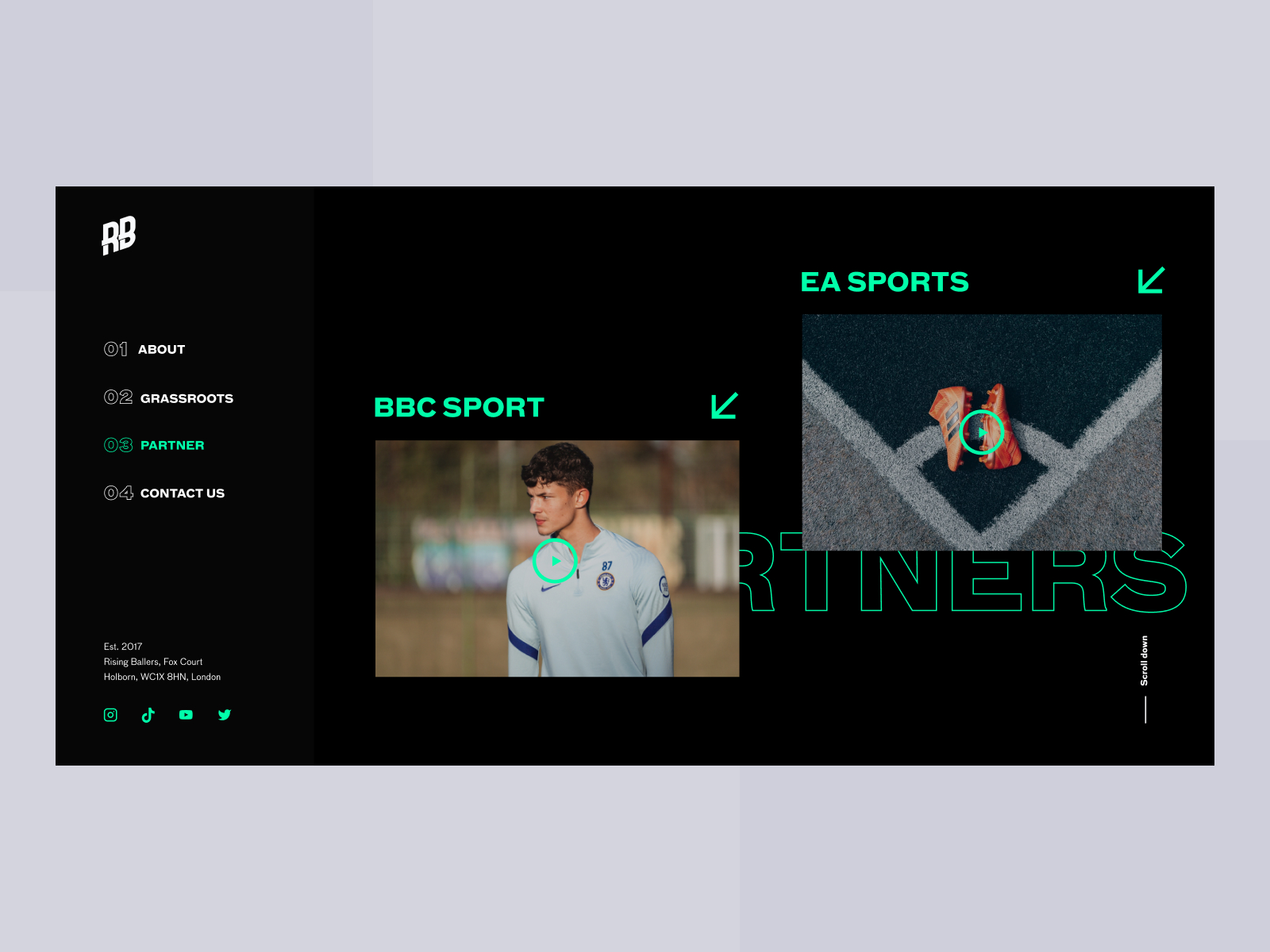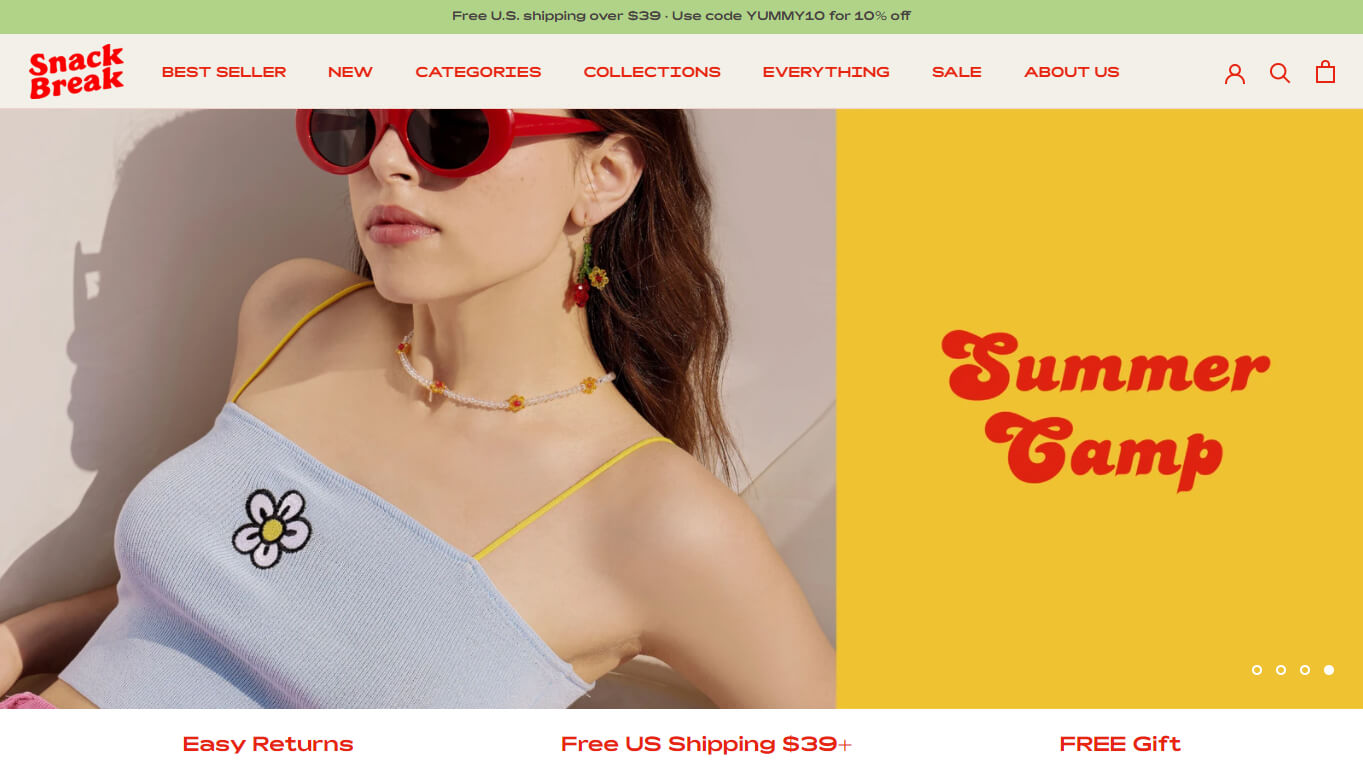Here’s a scenario, that unfortunately, many of us are familiar with:
You build a killing landing page, hire the most skilled UI designers, fill your page with cool animations and push it live, expecting to get hundreds of conversions overnight.
Alas, though, it turns out that your pretty costly endeavor was absolutely worthless. In fact, the one you had before turned out to be a more high-converting landing page, even though it had only a couple of simple visuals and CTA’s.
So, you might wonder: what are the elements of a high-converting landing page? Why do some landing pages succeed while others fail miserably?
If these questions are haunting you at night, you’re in the right place because we’re about to give you all the answers.
But before we do, let’s clear out some of the definitions:
What is a landing page?
If we put it in the most basic terms, the landing page is just a web page on which internet users can land. But this is a too-broad definition, and it is even a wrong one in the marketing world.
For marketing specialists, a landing page has a particular function. It is usually a standalone page that is not connected to your homepage or your other website pages and serves a single purpose.
Most of the time, that purpose is to bring conversions.
But before your visitors make it to your landing page, you have to make them already familiar with your product or offer through other channels. It can be a Facebook ad or an email: it does not matter much; you only need to somehow convey a short, alluring message with an attractive promise.
If you catch their attention and spark their curiosity, they will visit your landing page.
And here’s when the most important part comes. Your landing page should follow up the promise you made in your content and push your visitors to convert. This is the last step of your campaign cause here is the place where your visitors will decide to act upon your offer or decline it.
In other words, if you don’t have a high-converting landing page, your entire campaign will suffer.
Let’s skim through some of the:
Benefits of a good landing page
1. Good SEO rankings
A landing page is just another web page where you can stuff all your favorite keywords and get your website higher in the SERPs (search engine result pages). If you write the content wisely, you’ll soon see your promotion or product landing page on the first page of Google. So when creating the landing page, do not forget about SEO and keywords: they still matter.
2. Easy product/sales promotion
As we’ve already explained, landing pages are designed for a specific promotion or sales offer.
They exist outside of your website taxonomy, and you don’t need to worry about how the content of your landing page merges with the different pages of your website.
So you have all the power to be as specific and as creative in your landing page as you wish. As it is a more targeted page, it helps to bring more conversions as you know precisely who the page’s visitor will be.
The fact that your landing page is isolated helps you in the tracking process, as identifying the page’s success is way easier. You can figure out what exactly worked and what didn’t: were your keywords right, did you reach your intended goal, were your visitors interested in the particular product? All of these questions are easier to answer with a landing page.
https://www.youtube.com/watch?v=hcPxMuxh5Tc
3. A more efficient buying process
If your landing page is a high-converting one, it is easier to turn your visitors into your customers. This is because they are on your landing page for a reason: it’s not like they suddenly stumbled upon an offer somewhere on your homepage and couldn’t relate to it.
If they are on your landing page, they are thinking about conversion, for sure. All you need to do is to persuade them that it’s the right decision.
Well, you might think, all of this is great, but:
How to build a high-converting landing page?
Before we tell you what should be on a landing page, you must know exactly the purpose of the page. Do you want to get some new emails and grow your email list? Or is it a page for a specific product that you want your visitors to buy? In other words, you need to determine the goal of the page in order to reach it.
All of these different purposes will require different solutions. But in general, the elements of a high-converting landing page do not differ much. So let’s skim through some of them:
1. Catchy headline
This is the first element your visitors see and read on your landing page. It is where their journey with your page starts. So apparently, you need to work hard to make your headline as catchy and informative as possible.
You can go about writing your landing page headline in a couple of ways.
You can make it fun by including some puns or referrals to the pop culture. This way, your headline might not be very informative, but it will certainly catch your visitors’ attention.
Of course, it does not mean that you can put just anything as your headline. You need to somehow connect it to your product or offer; if you don’t do it, it will simply make no sense.
Another choice is to keep your headline straightforward and tell your message right away. This way, your visitors would instantly understand what the page is about and what you want to offer them.
We can’t tell for sure which one of these two is the best choice; it depends on your product and audience. If you’re targeting Gen Z, for instance, you can mess around for a little. But if your audience is Baby Boomers, and your product is pretty strict: it’s better to keep it simple.

2. Grabbing visuals
Today visuals are everywhere, and your landing page should not be an exception. Science shows that our brains are able to process visuals 60,000 times faster than text. So, if you want to convey a certain message, a well-designed graphic or an image could be as efficient as plain text.
When choosing and placing your image, here are some things to consider:
- Is your picture relevant to the product or service you’re offering? If you’re promoting a physical product, it should be included on your landing page. If you’re promoting a service, you should somehow illustrate it and add a relevant visual.
- Your picture should be large to grab attention.
- Your picture should be high-quality.
If possible, try to avoid the stock photos: they make the landing page look more amateur and cheap.
Aside from visuals, don’t forget to make the general UX of your landing page pleasant and easy to follow: it’s simply a must!
3. Dose of dopamine
Humans are pleasure-seeking machines, full stop. Even if you disagree with this hedonistic philosophy, it does not mean it won’t work for your landing page.
Here’s how you can increase the level of dopamine for your users through your landing page:
- Show how your product will bring them joy: illustrate somehow the pleasure of owning your product. This could be done by showing certain images of people who have or use your product or by finding the right words to convey the message.
- Show how joyous it is to buy your product: purchasing something new is a pure source of dopamine. So, make sure you remind your customers of that on your landing page.
Finally, your landing page itself should be a source of dopamine. How? Well, with the right combination of colors and copies, you can make your page feel like a real treat.
And remember, behind every product and service is an emotion. Look at the About Us page of a trendy jewelry shop, Snack Break. They are positioning themselves as a brand that sells high-school California summer nights through their pieces of jewelry. In other words, they are not just selling chunky rings; they are selling nostalgic feelings for our teen years.

4. Sense of Urgency
Now that you’ve given your users their dose of dopamine, it’s time to scare them out. But not too much, just enough. In other words, you need to tell them that if they don’t buy your product or service right now, they probably won’t be able to do it later.
This is why many shops would give you a discount when you first open their website, which you can use only on that day. That makes you feel that you’re losing something if you don’t make your purchase decision right away.
So tell your users that they don’t have an eternity to think over the subscription, purchase, or conversion: they should do it ASAP!
5. Powerful CTA
Close your deal with a powerful CTA. Try to make it actionable and fun at the same time. It should be something that makes you convert instantly!
So now you know what should be on a landing page that converts!
General FAQ
What is considered to be a high conversion rate for a landing page?
The conversion rate will differ depending on the industry you work in. In general, the number is in the range of 2.35-5.31%. However, ideally, you want to take it as high as 11.45% or more if you’re aiming to appear on the list of top converting pages.
Should my landing page be long or short?
It depends on your goals. Long landing pages are usually for more complicated products or services because they need to be explained with more information. Short landing pages, on the contrary, could work for easy products or cases where your customers are already aware of your brand.
Can I test my landing page?
Absolutely! You can create two options for your landing page and conduct A/B testing to understand which works best. This detailed guide demonstrates how you can do so.
